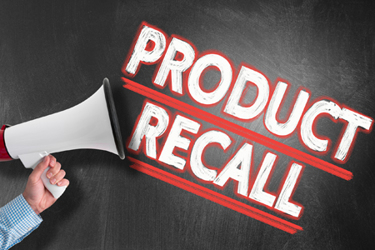How Can We Use The UDI To Improve The Device Recall Process?
By Nancy LeMaster, Association for Health Care Resource & Materials Management

The vision of having one consistent unique identifier assigned to a specific manufacturer and medical device model/version combination, allowing the device to be tracked from the point of creation through its journey across the supply chain and into a patient’s health record, was what drove the creation of the Unique Device Identifier (UDI) regulation. The UDI was designed to have two components: the Device Identifier (UDI-DI), a mandatory, fixed portion of the UDI that identifies the labeler and the specific version or model of the device, and the Production Identifier (UDI-PI). The UDI-PI is a conditional, variable portion of the UDI that identifies one or more of the following when included on the label of the device: lot or batch number, serial number, expiration date, manufactured date, or distinct identification code as required for human cell, tissue, or cellular and tissue-based products.
The UDI was expected to improve patient and device safety by enhancing key patient safety systems like the product recall and adverse event reporting processes and improve device evaluation through research and real-world evidence to determine the clinical effectiveness of specific devices within defined patient populations. Additionally, the UDI would streamline and improve the efficiency of the healthcare supply chain by requiring manufacturers to submit the data associated with the UDI-DI to the Global UDI Data Base (GUDID) and make this information available to all stakeholders at no cost through AccessGUDID.
The Association for Health Care Resource & Materials Management’s Learning UDI Community’s (AHRMM LUC’s) UDI Impacts on Recall Management workgroup was formed to support this vision by expanding and optimizing the use of the UDI throughout the recall process. Its mission included defining the benefits and barriers to healthcare stakeholders (manufacturers, distributors, providers, patients, etc.) of using the UDI throughout the recall process and developing recommended practices to increase its utilization.
Over 70 individuals representing manufacturers, distributors, healthcare providers, software application providers, representatives from the FDA’s Center for Devices and Radiological Health (FDA CDRH), group purchasing organizations (GPOs), recall management organizations, standards organizations, trade associations, and healthcare consultants participated in various aspects of the workgroup’s efforts. In addition to their own expertise and the experiences of the companies they represented, members conducted surveys and interviews to gain additional insights and develop recommended practices.
The UDI regulations for manufacturers began going into effect in 2014 based on the risk classification of the medical device. The graph below illustrates the frequency with which the UDI was included in implantable and other medical device recalls. Although inclusion of the UDI has increased over time, it remains low, even for implantable devices. The lack of the UDI makes it very difficult for hospitals to link recalled devices with the patient who received the device.

Figure 1: Recall Volume Trends (Source: Information provided by Symmetric Health Solutions).
Benefits Of & Barriers To Implementing UDI In The Recall Process
An analysis of each stakeholder’s current situation and the benefits and barriers to including the UDI throughout the recall process was conducted. Key responses from the manufacturer group included the following:
- Manufacturers’ pain points included slow FDA response time (e.g., delays in recall classification designation and close out process) and variation in the information requested. Additionally, confirming customer receipt of recall notification and customer response time was problematic.
- Key cost drivers were the customer notification and follow-up process, the product reconciliation process, and the FDA submission and communication process. Internal restrictions prohibited manufacturers from sharing specific cost data or cost ranges. Manufacturers did agree that if the inclusion of the UDI and a standardized, electronic submission process, coupled with publicly accessible databases (like the UDI system), improved healthcare provider responsiveness and efficiency, it would potentially reduce their operating costs.
- The current recall process is manual and paper/PDF based. In some limited situations manufacturers are submitting structured data via an FDA online tool called e-submitter, but most submissions are done via email using PDF and Excel files. Recall notices sent from manufacturers to healthcare providers and distributors consist of paper documents sent via the mail or a delivery service (e.g., FedEx).
- Manufacturers indicated the biggest barrier to including the UDI in recall information was the lack of an explicit requirement from the FDA and/or healthcare providers.
Feedback from healthcare providers included the following:
- The lack of standardized data that included the UDI and was available in an electronic format negatively impacted their ability to quickly respond to recall notices.
- Healthcare providers, distributors, and the FDA each manually transcribe recall information from the manufacturer into their internal systems or databases. Third-party recall management organizations offer a range of services to healthcare providers to assist with this process. Some are provided at no charge, but most involve a fee.
- To effectively track a recalled implantable device to the affected patient, the UDI of the implanted device needs to be included in the recall notice and captured in both electronic health record (EHR) and enterprise resource planning (ERP) systems software.
- Healthcare providers estimated the labor for responding to recalls ranged from 16 to 104 hours per recall, depending on the type and extent of the recall. One provider indicated they processed 42 Class I recalls during a 12-month period estimated at a cost of $20,166.
Recommendations For Improving The Recall Process
Workgroup members identified recommended practices for each stakeholder group that could improve the safety and efficacy of the recall process. The most critical recommendations included:
- Encourage manufacturers and the FDA to immediately begin including the UDI-DI and UDI-PI in all recall related communications.
- Support the FDA’s Technology Modernization Action Plan efforts and encourage the use of the UDI-DI as the “link” between all FDA databases. Leverage the information in GUDID to auto-populate fields used in manufacturer submissions and FDA postings of recall and adverse event information.
- Suggest the FDA consider using the IT structure and workflow developed by the UDI program for the GUDID and AccessGUDID as a model that could be replicated for the recall process. The UDI system was set up with manufacturers’ submissions of structured data stored in a publicly available database with multiple methods of access (downloads, APIs, etc.) by various stakeholders.
- In the case of recalls, a set of required and optional recall data elements should be identified for manufacturers to submit in a structured electronic format through a web interface portal.
- Like the GUDID, the manufacturers’ recall information should be available to stakeholders in a timely manner and in a standardized digital electronic format so they can integrate it with internal procurement, inventory management, distribution, and EHR and ERP systems software. This allows relevant stakeholders to quickly locate and remove recalled products as well as providing notification and instructions to clinicians and patients, depending on the circumstances.
- To support the GUDID’s role as the “link” between all FDA CDRH databases and the source to auto populate manufacturers’ submissions, robust feedback-based enhancements to GUDID should be part of digital transformation and data modernization efforts to ensure the timely updating and synchronization of all CDRH databases.
- Healthcare providers should continue to educate manufacturers that in addition to improving patient safety and quality of care, the inclusion of the UDI can enhance providers’ ability to respond quickly and accurately to a recall, thereby reducing manufacturers’ costs.
- Form a coalition of healthcare stakeholder advocacy organizations to elicit support from Congress and the FDA for creating and maintaining a structured electronic recall process. This will increase patient safety and reduce operating expenses by providing better access to standardized recall data and a searchable database available to manufacturers, distributors, healthcare providers, and other stakeholders.
In addition to the full report, the workgroup created a comprehensive Regulatory Resource Guide and a supporting documentation file that includes detailed reports, surveys, and summary presentations created by workgroup members. All documents can be found at AHRMM.ORG/LUC.
About The Author:
 Nancy LeMaster leads the Association for Health Care Resource & Materials Management (AHRMM) Learning UDI workgroups, which are focused on expanding UDI adoption and utilization. She has also parlayed her years of healthcare supply chain experience into the formation of Nancy J. LeMaster Consulting. In addition, LeMaster serves as chair of the ISM Hospital Business Survey Committee. She spent most of her career at BJC HealthCare in St. Louis, where she served for 18 years as vice president of supply chain operations. She was inducted into the Bellwether League Supply Chain Hall of Fame in 2015 and has received leadership awards from GHX, YWCA, and BJC HealthCare.
Nancy LeMaster leads the Association for Health Care Resource & Materials Management (AHRMM) Learning UDI workgroups, which are focused on expanding UDI adoption and utilization. She has also parlayed her years of healthcare supply chain experience into the formation of Nancy J. LeMaster Consulting. In addition, LeMaster serves as chair of the ISM Hospital Business Survey Committee. She spent most of her career at BJC HealthCare in St. Louis, where she served for 18 years as vice president of supply chain operations. She was inducted into the Bellwether League Supply Chain Hall of Fame in 2015 and has received leadership awards from GHX, YWCA, and BJC HealthCare.
